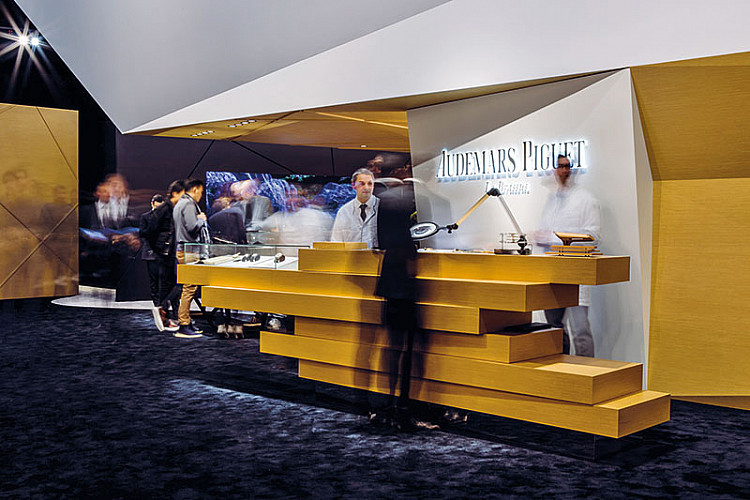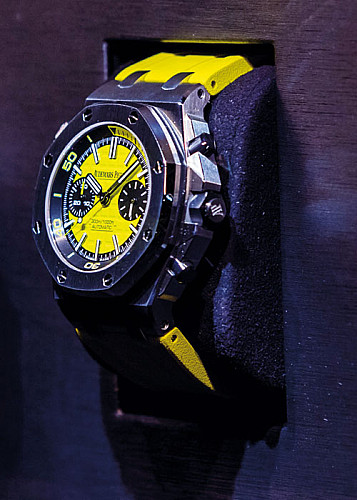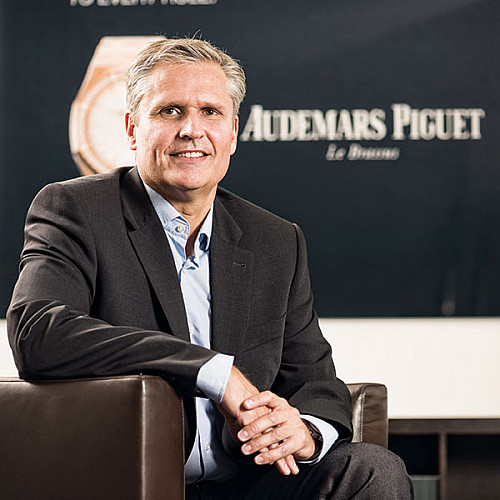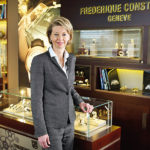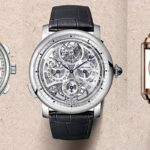Here’s Why Audemars Piguet Epitomises Watchmaking Excellence
Something that most successful impresarios swear by is that when you know, understand and internalise the rules of the game, it’s often a good move to take that a step forward and innovate your own. Jules Audemars and Edward Piguet did just that when they built their brand all the way back in 1875, in Switzerland’s Vallée de Joux. The village of Le Brassus, where the headquarters still sits, saw the manufacture present some of the most complicated mechanisms, including many global firsts.
They introduced the first minute repeater wristwatch in 1892, one year after creating the smallest minute repeater movement in the world. The first grande complication collection came in 1915, followed by the first wrist chronometers in 1927 and the first self-winding, ultra-thin perpetual calendar wristwatch with central rotor in 1978, with numerous others in between.
The most famous, however, was the introduction of a luxury steel watch with integrated bracelet, characterised by a daring and revolutionary design — the iconic Royal Oak. Conceptualised in less than 24 hours by one of the best designers of the time — Gerald Genta — it was inspired by a diver’s helmet, had an octagonal bezel secured by eight visible hexagonal white gold screws, a prominent water-resistance gasket and a unique blue petit tapisserie motif on the dial. Bear in mind, this came at a time when luxury watches were slim, round and cast in gold. Like most strokes of genius, it was met with resistance, but soon went on to garner international commendation. It’s impossible now to think of Audemars Piguet without picturing this masterpiece in any of its many avatars since then.
Today, not only is each piece still handcrafted with precision and expertise, but the brand is still run by members of the Audemars and Piguet families…a rare feat in the watchmaking world. Even after 140 years, the horological house remains an innovative leader that echoes the values of its avant-garde founders.
Last year, Claude Emmenegger became the new creative director of Audemars Piguet. After a stint with the brand from 1999 to 2003, he left to establish his own design consulting company. Twelve years and working with 40 brands later, he is back, firm in the belief that his appreciation for the brand has not changed a bit. He’s the creator of the Royal Oak Concept (2002) and the Tradition of Excellence models 2, 3 and 4; currently his main objectives include the development of the women’s category, high-tech concepts and new functionalities. ‘Break the rules in order to revolutionise horology’ is Emmenegger’s philosophy. Find out more:
Design vision
“Audemars Piguet is known for its classical points, along with innovation. I would like to take the design in a more modern direction inspired by contemporary art: make it evolve — though, not change — from what it is now.”
Audemars Piguet philosophy
“Diversity in excellence. When Audemars Piguet does something new, the idea is not to stop things halfway; it is to do something innovative and to finish it in the right way.”
Creative inspirations
“We live in a world where we are bombarded by sounds, images, perceptions…. The strength of a designer is to be able to hear in all that mass of information — what is interesting, what could be combined, what is of essence — and bring that together into something new. Once you have passed the stage of mood boards where you filter out the things you want to focus on…then, what the world is doing and what the noise is saying doesn’t matter anymore. Then you just have to get it done!”
Advanced complications for women
“We are in the middle of progress into that field. It’s really a big project right now — there are things in the pipeline and on the board, to see how the movements can evolve.”
When design meets technology
“It’s a bit like two brothers with different characters…. When you have a dream that you want to transform into a reality, it takes quite a bit to follow a road and make it happen. Even if you want to, tech may say, ‘No we can’t do it!’ You have to be able to stimulate them and persuade them…we are going to bend the iron a little bit more, but we are going to make it work!
What has really changed is the team spirit. You have people from design, from production, from the technological world, having discussions as early as possible. And rather than ‘No, it’s impossible to make it’, to agree on ‘Let’s find out if we can do it!’”
Related posts from Verve:
Verve Trending
Sorry. No data so far.
us on Facebook to stay updated with the latest trends

